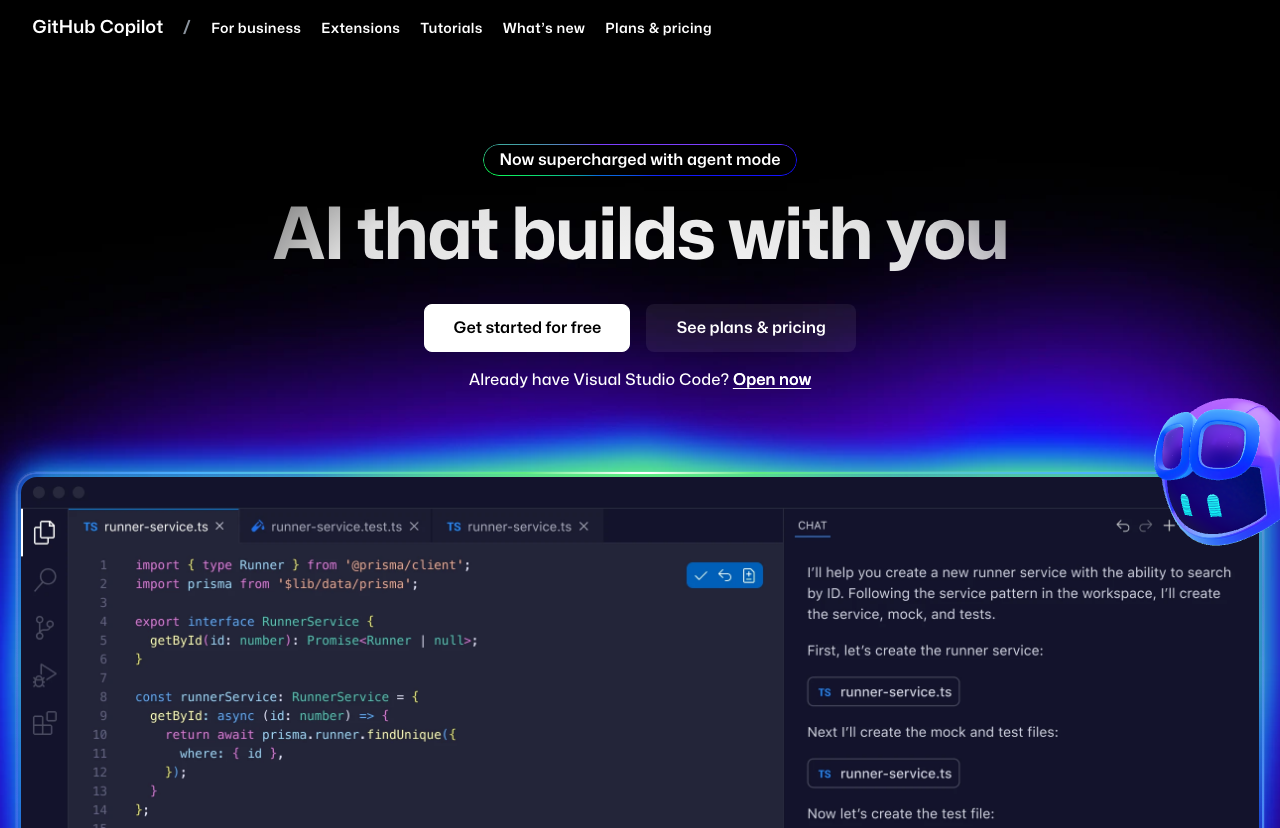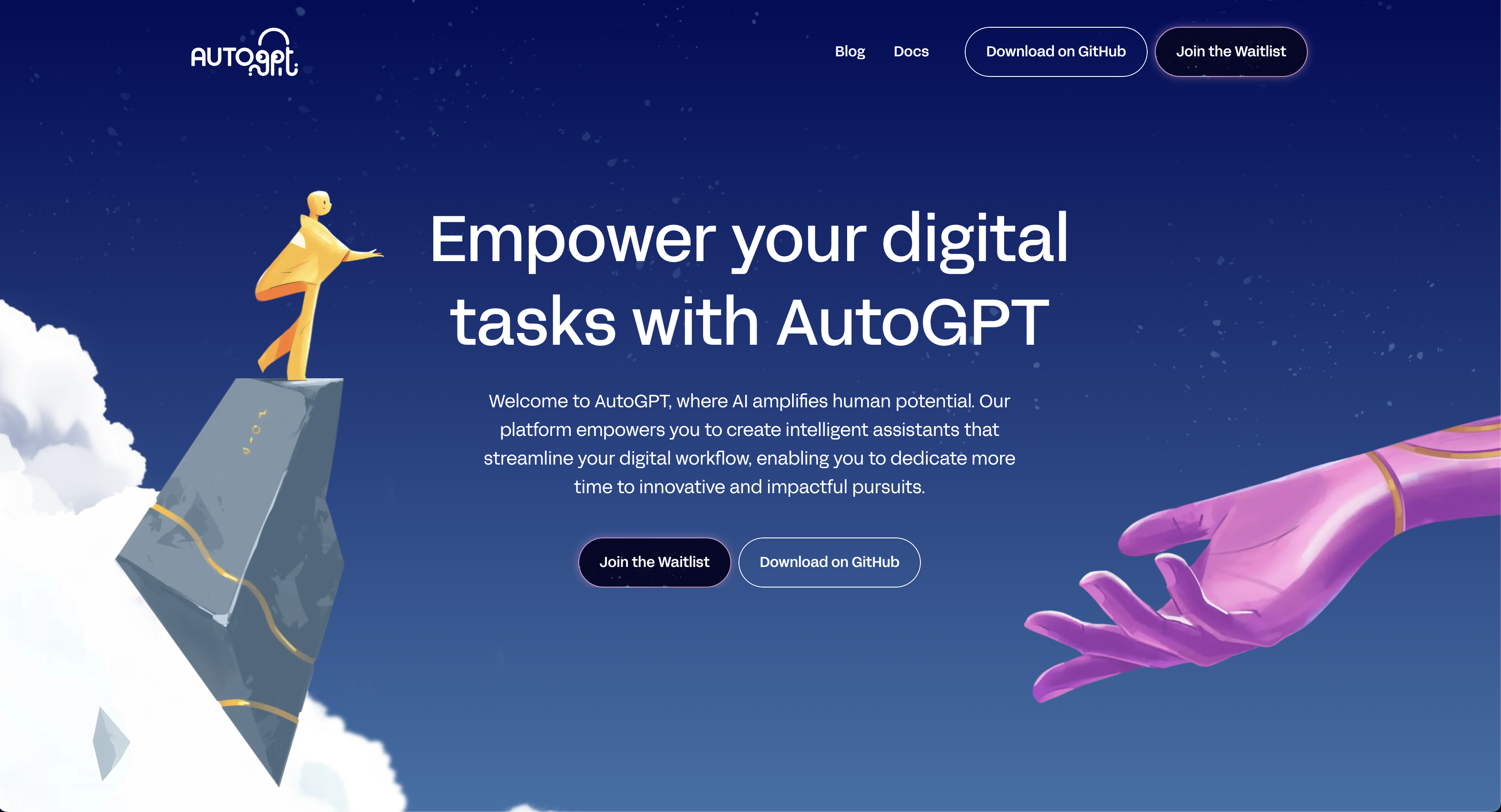AI Arms Race: Enterprise AI Adoption Accelerates Amid Profitability and Governance Concerns

As AI adoption accelerates across enterprises, a critical divergence emerges between rapid deployment and underlying profitability and governance. Discover how this tension impacts long-term scalability, security, and ethics, and learn to navigate the uncharted waters of AI governance by focusing on specific use cases with measurable value to ensure sustainable and responsible AI integration.
Microsoft and SAP's Copilot Enterprise Alliance: Challenging Google and Salesforce in the Enterprise AI Arena

The enterprise AI arena is heating up as major players vie for dominance, and the recent alliance between Microsoft and SAP is poised to shake things up considerably. This strategic partnership centers around Copilot Enterprise, a direct challenge to Google's Gemini 2.0 Agents and Salesforce's own expansive AI initiatives. The goal? To embed powerful AI agents deep within the core systems that businesses rely on every day. Let's break down what this means for the future of enterprise AI.
A Deep Dive into the Microsoft-SAP Partnership
This isn't just a superficial collaboration; it's a deep, strategic integration. The heart of the alliance lies in weaving Copilot Agents into two critical ecosystems: Microsoft's ubiquitous Office applications and SAP's core enterprise systems, particularly S/4HANA. Think of it as injecting AI directly into the bloodstream of how companies operate. Tools like Microsoft Copilot aim to enhance productivity across various Microsoft 365 apps.
Unleashing Autonomous AI Agents for Complex Tasks
The real game-changer here is the focus on enterprise-level autonomous AI agents. These aren't your run-of-the-mill chatbots; they're designed to automate complex, company-wide tasks that span both Microsoft and SAP environments. Imagine an AI agent capable of identifying bottlenecks in your supply chain, proactively alerting stakeholders, and even generating purchase orders – all without human intervention. That’s the level of automation Copilot Enterprise is aiming to deliver. For example, you could use a tool like n8n, a workflow automation platform, to connect different AI tools and automate business processes.
AI-Powered Automation: A New Era for Business Processes
At its core, this partnership is about AI-powered automation of business processes. By tightly integrating Copilot Agents into Office applications and SAP S/4HANA, Microsoft and SAP are enabling a new level of efficiency and insight. This isn't just about making individual tasks easier; it's about transforming entire workflows.
The Enterprise Software AI Race: A Three-Horse Race?
The launch of Copilot Enterprise firmly establishes a three-way race in the enterprise software AI space. Google, with its Gemini Ultra agents, Salesforce, with its established AI cloud, and now Microsoft-SAP, are all vying for the top spot. The key differentiator will be the depth of integration, the autonomy of the AI agents, and the tangible impact on business outcomes. This is more than just a technological arms race; it's a battle for the future of how businesses operate, and it's only just beginning. Stay tuned to AI News for the latest updates on this rapidly evolving landscape.
OpenAI's Billion-Dollar Inference Spending: Questioning the Profitability of Large-Scale AI Models
The AI world was rocked this year with leaked financial documents revealing that OpenAI, the company behind ChatGPT, spent a staggering $8.65 billion on inference in the first nine months of 2025. Inference, in AI terms, refers to the process of using a trained model to generate predictions or outputs—essentially, the cost of running those massive models every time someone asks ChatGPT a question or generates an image. If this rate continues, OpenAI's total spending for 2025 could exceed a mind-boggling $13 billion.
The Profitability Question

This colossal expenditure raises some serious questions about the profitability of large-scale AI models. Is OpenAI, and by extension, the entire industry, spending more on running these models than they're actually earning? It's a crucial question because it gets to the heart of whether the current AI boom is sustainable or just a bubble waiting to burst. These high inference costs are not unique to OpenAI; other companies developing large language models (LLMs) are facing similar challenges. The costs associated with the hardware, energy consumption, and specialized expertise required to run these models at scale are substantial.
Altman's Optimism vs. Financial Realities
While OpenAI CEO Sam Altman claims that revenue is "well more" than $13 billion annually, the spending patterns suggest razor-thin margins. If the revenue claims are true, it still leaves little room for error, research and development, or future investments. The documents have ignited a debate about the viability of current AI business models. Are companies focusing too much on scaling up and not enough on efficiency and cost management? This is crucial, because as AI models become more sophisticated, so do the demands for computational power, further driving up inference costs. Perhaps innovations in model optimization, hardware acceleration, or alternative computing architectures will be necessary to make these models economically sustainable in the long run.
The Broader Implications
The leaked financials serve as a stark reminder that the AI revolution is not just about technological breakthroughs; it's also about building sustainable and profitable businesses. As the AI landscape continues to evolve, companies will need to find innovative ways to balance ambition with financial prudence. Otherwise, the dream of widespread AI adoption could be overshadowed by economic realities. Staying informed about developments in the AI space is crucial, so keep an eye on our AI News section for the latest updates.
Google's NotebookLM Deep Research: Enhancing AI-Powered Research and Analysis
The race to dominate the AI landscape is heating up, and Google is making significant strides in enhancing AI-powered research and analysis with its NotebookLM platform. NotebookLM, now part of Google AI Studio, is designed to be an AI research assistant that helps users understand and synthesize information from various sources. The recent updates promise to transform how knowledge workers approach complex research tasks.

Unveiling the 'Deep Research' Feature
At the heart of Google's latest enhancements is the introduction of the "Deep Research" feature. This tool leverages AI to conduct multi-step analysis and synthesis of uploaded documents. Imagine feeding NotebookLM a collection of research papers, reports, and articles related to a specific topic. The AI then autonomously sifts through these documents, identifies key themes, extracts relevant data, and synthesizes the information into a coherent summary. What sets this apart is the AI's ability to attribute its findings directly to the source documents, ensuring transparency and verifiability – crucial for academic and professional research. This is a giant leap from simply summarizing individual documents; it's about creating a holistic understanding of a subject through interconnected insights.
Expanded File Format Support
To further broaden its utility, Google has expanded NotebookLM's compatibility to include Google Sheets, Microsoft Word documents, and images. The integration with Google Sheets allows users to upload and analyze structured data, uncovering patterns and insights that might be buried within spreadsheets. Support for Microsoft Word documents means that users can seamlessly incorporate their existing reports and manuscripts into the NotebookLM workflow. The inclusion of images opens up new possibilities for visual analysis, enabling the AI to extract information from charts, diagrams, and even photographs. Imagine using Adobe Photoshop AI to clean up old photos for analysis and using NotebookLM to get better insights from them.
NotebookLM Capabilities: An AI Research Assistant
NotebookLM is designed to be an indispensable AI research assistant for anyone who needs to make sense of large amounts of information. Its capabilities extend beyond simple summarization. It can:
Identify key concepts and themes: Quickly pinpoint the most important ideas within a document or set of documents.
Extract relevant data: Automatically pull out specific data points from text and tables.
Synthesize information from multiple sources: Create a unified view of a topic by combining insights from various documents.
Generate summaries and outlines: Produce concise summaries and well-structured outlines to aid comprehension.
Answer questions based on the provided documents: Act as a knowledgeable assistant that can answer specific questions, citing the sources for its answers.
Think of NotebookLM as a digital research partner, one that never tires and always provides clear, evidence-based insights. The ability to conduct document analysis with AI and integrate seamlessly with popular productivity tools like Google Sheets and Microsoft Word positions NotebookLM as a powerful tool for knowledge workers across various fields.
With these enhancements, Google is not just refining an AI tool; it's redefining how we approach research and analysis in the age of AI. This focus on AI-driven research assistance is set to empower users to extract deeper insights, accelerate their work, and make more informed decisions.
Perplexity's Comet Assistant Upgrades: Emphasizing Transparency and Safety in Autonomous AI

Perplexity is taking a major step forward in the realm of AI assistants, with its Comet Assistant upgrades prioritizing something often overlooked: transparency and control. These enhancements aren't just about adding new features; they represent a fundamental shift in how we approach autonomous AI, particularly within enterprise environments where trust and accountability are paramount.
The Push for Explainable AI
The core of the Comet Assistant's upgrades lies in its enhanced explainability features. Imagine asking an AI to make a crucial decision, like adjusting marketing spend based on real-time data. Previously, you might have only seen the result – the new budget allocation. But with these upgrades, Comet provides a clear, step-by-step breakdown of its reasoning. This might include:
Data points considered
Algorithms used for analysis
The specific logic that led to the final decision
This level of transparency isn't just a nice-to-have; it's becoming a necessity. As AI takes on more complex tasks, understanding its decision-making process is crucial for identifying potential biases, correcting errors, and ensuring alignment with business objectives. It's a move towards Explainable AI (XAI), making AI more understandable and trustworthy.
Strengthening AI Safety Guardrails
Beyond explainability, the upgrades also focus on bolstering AI safety guardrails. These act as a safety net, preventing the AI from making decisions that could have unintended or harmful consequences. For example, if the Comet Assistant is used to automate customer service responses, the safety guardrails might prevent it from disclosing sensitive information or making promises the company can't keep.
The integration of these safety measures reflects a broader industry trend towards responsible AI. As AI systems become more sophisticated, ensuring they operate ethically and in accordance with human values is critical. Perplexity is proactively embedding these principles into its platform.
A Shift Towards Responsible Autonomy
These upgrades signal a wider move within the AI landscape – a move toward "responsible autonomy." It's no longer enough to simply unleash AI tools and hope for the best. Businesses are increasingly recognizing the need for transparency, control, and ethical considerations in their AI deployments. This is especially important in the enterprise, where the stakes are high and the potential for both benefit and harm are significant.
Perplexity's Comet Assistant upgrades highlight a critical point: the future of AI isn't just about automation and efficiency; it's about building AI systems that are transparent, safe, and aligned with human values. As the industry continues to evolve, expect to see even greater emphasis on these principles, with tools like Perplexity Pro leading the charge. The focus on explainability and safety marks a pivotal step towards widespread trust and adoption.
AI Revolutionizes Drug Discovery: Life Sciences Embrace AI as Foundational Infrastructure
The life sciences are undergoing a seismic shift, with AI moving from a supporting role to a foundational element in modern drug discovery. What was once considered a futuristic add-on is now being embraced as essential infrastructure, particularly within innovative biotech startups. This transformation promises to revolutionize how we approach the development of new treatments, potentially saving countless lives and billions of dollars.
The AI-Driven Biotech Revolution

No longer a mere auxiliary tool, AI is becoming deeply embedded in the very fabric of biotech research. Startups are leveraging AI across the entire drug discovery pipeline, from target identification and validation to lead optimization and clinical trial design. This sea change is fueled by the promise of increased efficiency, reduced costs, and, most importantly, a higher probability of success. Imagine a world where promising drug candidates are identified and refined in a fraction of the time, accelerating the journey from the lab bench to the patient's bedside.
Boosting Clinical Trial Success Rates
One of the most compelling arguments for AI in drug discovery lies in its potential to dramatically improve clinical trial success rates. Traditional drug development is plagued by high failure rates, with only about 10% of drugs entering clinical trials eventually making it to market. AI offers a powerful solution by analyzing vast datasets to identify patterns, predict outcomes, and select the most promising drug candidates for further development. Some experts believe that AI could potentially increase clinical trial success rates to as high as 50%, a game-changing improvement that would transform the economics of the pharmaceutical industry.
Accelerating Discovery and Challenging Eroom's Law
AI is also revolutionizing the speed and efficiency of drug discovery. By automating tedious tasks, optimizing experimental design, and generating novel insights, AI algorithms can significantly accelerate the process of identifying and developing new drug candidates. This speed is crucial in addressing urgent medical needs and staying ahead of emerging health threats. Moreover, AI offers a potential antidote to "Eroom's Law" (Moore's Law spelled backward), which observes that drug discovery has become slower and more expensive over time. By enabling researchers to design optimal drug candidates upfront, Generative AI promises to reverse this trend and unlock a new era of innovation.
The integration of AI, including tools like DeepMind AlphaFold for protein structure prediction, is not just a trend but a fundamental shift. As AI algorithms continue to evolve and become more sophisticated, we can expect even more transformative breakthroughs in the years to come. This convergence of AI and biotech holds immense promise for addressing some of the world's most pressing health challenges and improving the lives of millions.
Analysis: The Diverging Paths of Enterprise AI Adoption and Financial Reality
The narrative around AI is becoming increasingly complex, revealing a deepening fault line between the accelerated adoption of AI across enterprises and fundamental questions about its profitability. While companies are rushing to integrate AI into their operations, the financial realities and governance challenges are becoming harder to ignore.
The AI Adoption Race: Microsoft, SAP, and Autonomous Agents
The recent partnership between Microsoft and SAP to integrate Microsoft Copilot Enterprise into SAP solutions exemplifies this trend. While these AI agents promise to revolutionize workflows, their deployment is proceeding at a pace that outstrips the development of robust governance models. We're seeing AI agents deployed into production environments, automating tasks and augmenting human capabilities, yet the underlying economics and governance frameworks remain largely unresolved. It's like building a high-speed train before laying down all the track – exciting, but potentially risky. This rapid deployment raises questions about long-term scalability, security, and ethical considerations.
OpenAI's Economic Puzzle and the Quest for Transparency
Adding fuel to the fire, leaked documents from OpenAI have exposed the staggering costs associated with AI inference. Billions are being spent to process user queries and generate responses, yet clear evidence of profitability remains elusive. This financial uncertainty underscores the need for more transparent and sustainable AI financial models. However, on the other side we see platforms such as Google's NotebookLM and Perplexity taking steps to embed AI deeper into existing workflows while simultaneously introducing transparency upgrades, allowing users greater insight into the models and processes driving the tools.
AI's ROI: A Sectoral Perspective
Despite the overarching questions, some sectors are demonstrating more tangible returns on AI investments. For instance, in the life sciences, AI is delivering unambiguous ROI by accelerating drug discovery, personalizing treatment plans, and optimizing research processes. This success highlights the importance of focusing on specific use cases where AI can address well-defined problems and generate measurable value.
Navigating the Uncharted Waters of AI Governance
The challenge now lies in addressing the unresolved issues of AI financial models and AI governance. As AI adoption accelerates, establishing clear guidelines, ethical frameworks, and accountability mechanisms becomes paramount. Without these safeguards, the promise of AI could be undermined by unforeseen risks and unintended consequences. The industry must shift its focus from simply deploying AI to ensuring its sustainable, responsible, and profitable integration into the enterprise landscape.
🎧 Listen to the Podcast
Hear us discuss this topic in more detail on our latest podcast episode: https://open.spotify.com/episode/2xLxDYXTxmhXmPfAkbZfmJ?si=BJBLqmsCTPiIMSACvj1pXA
Keywords: AI, Artificial Intelligence, Enterprise AI, AI Adoption, AI Profitability, Microsoft Copilot, SAP Copilot Enterprise, OpenAI Inference Costs, Google NotebookLM, Perplexity AI, AI Drug Discovery, Autonomous AI Agents, AI Governance, AI Transparency, AI Safety
Hashtags: #AI #ArtificialIntelligence #EnterpriseAI #MachineLearning #TechNews
For more AI insights and tool reviews, visit our website https://best-ai-tools.org, and follow us on our social media channels!
Website: https://best-ai-tools.org
X (Twitter): https://x.com/bitautor36935
Instagram: https://www.instagram.com/bestaitoolsorg
Telegram: https://t.me/BestAIToolsCommunity
Medium: https://medium.com/@bitautor.de
Spotify: https://creators.spotify.com/pod/profile/bestaitools
Facebook: https://www.facebook.com/profile.php?id=61577063078524
YouTube: https://www.youtube.com/@BitAutor
Recommended AI tools

Your everyday Google AI assistant for creativity, research, and productivity

AI workflow automation for technical teams

Your AI pair programmer

All-in-one AI assistant for seamless teamwork, smarter workflows, and integrated productivity.

Build, automate, and scale AI-powered business solutions with the #1 enterprise platform.

Continuous automation with autonomous AI agents—integrate, deploy, and manage intelligent workflows seamlessly.


